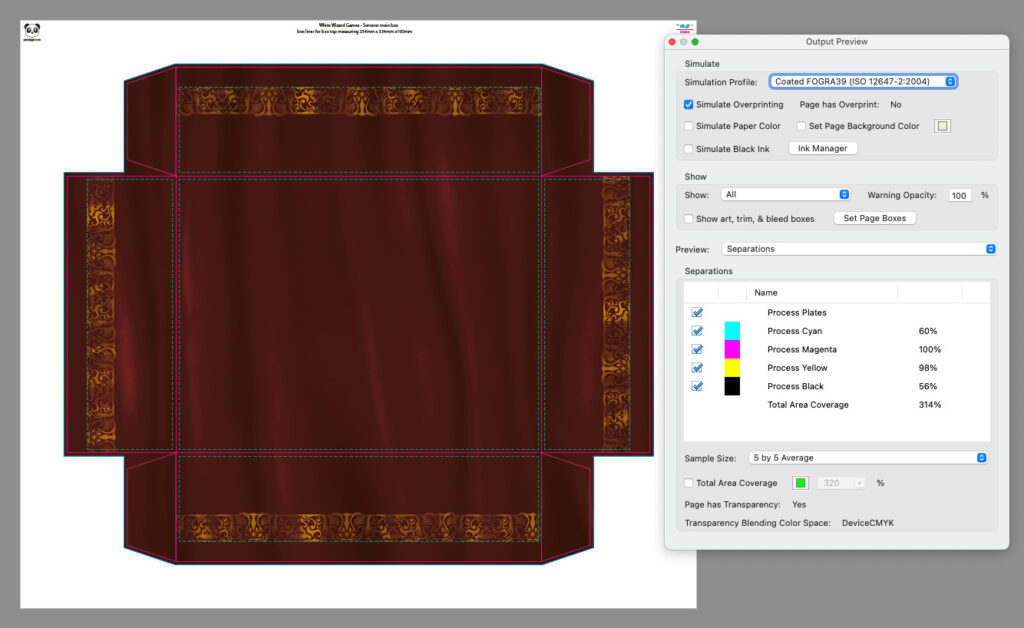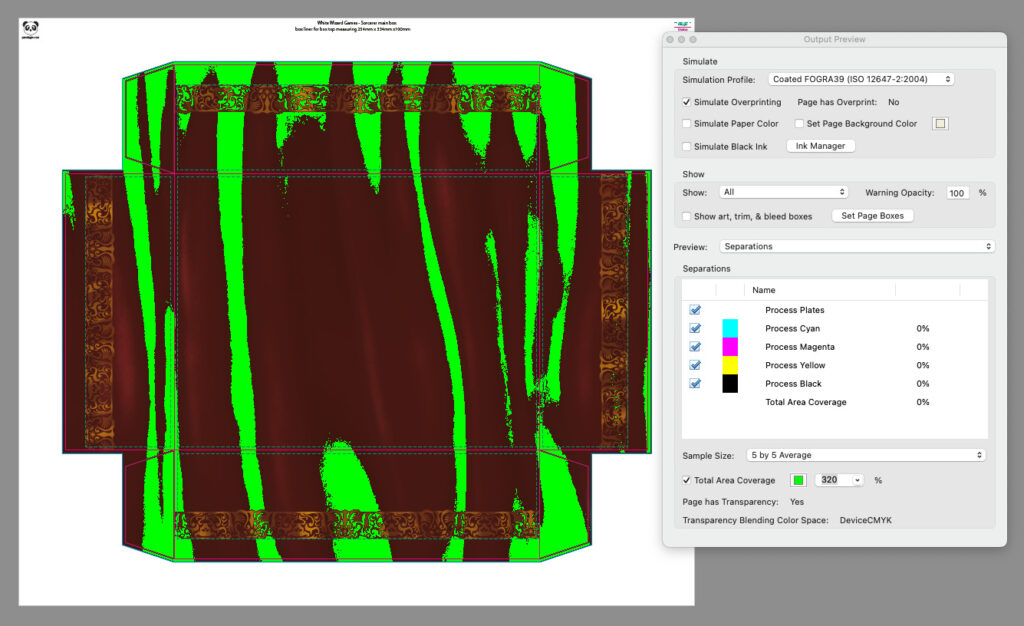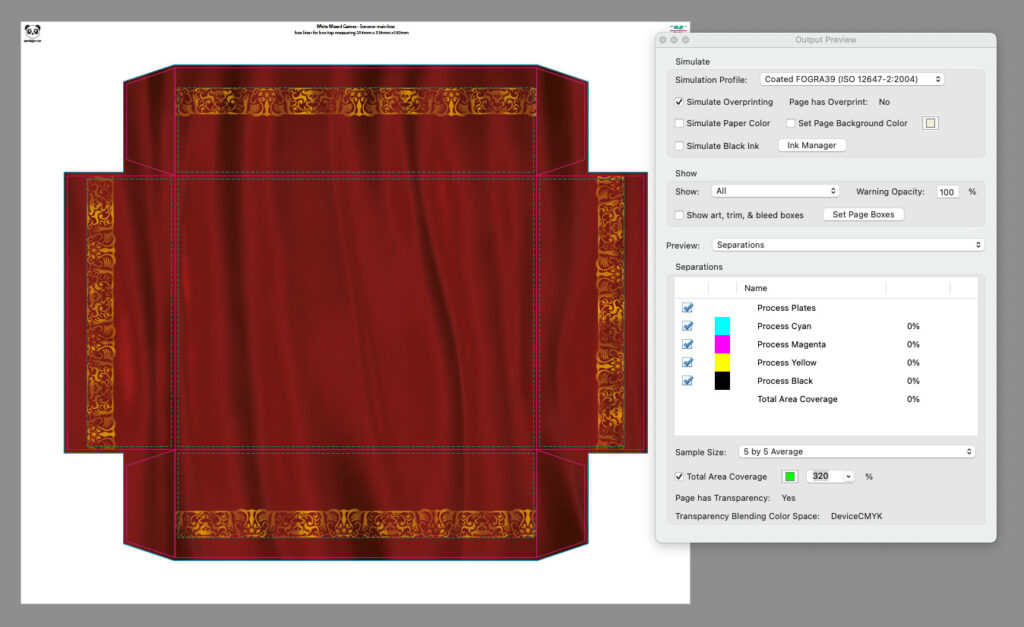Information #
Total Area Coverage (or TAC), refers to how much ink is applied to the paper during printing. For each ink, it can be 0% (no ink at all) up to a maximum of 100% (maximum ink applied). With four inks, Cyan, Magenta, Yellow, and Black, the TAC value can be between 0% and 400% (the individual % values of the four inks added together will give you the TAC value).
The maximum TAC for any part of an art file is 320%. As the 320% TAC level is exceeded, there is an increased risk of longer dry times which can lead to smudging of printed materials.
Best Practices #
- Avoid using high TAC values for text such as rich black, as it can often be near or above the 320% TAC threshold. Black text or icons should pure black and have no other inks. (C:0% M:0% Y:0% K:100%). Don’t forget to set these items to Overprint.
- Avoid using high TAC values for areas of images. Images with high TAC will appear very dark and will show less detail.
- Avoid using ‘registration’ color for design objects or elements. Since ‘registration’ color equals 100% of each ink (C:100% M:100% Y:100% K:100%), the total ink coverage is always exceeded when this color is used.
To check for high TAC, use Adobe Acrobat Pro’s Preflight tool #
Step 1: Open Acrobat Pro
Step 2: Open your pdf
Step 3: Go to View > Tools > Print Production > Open
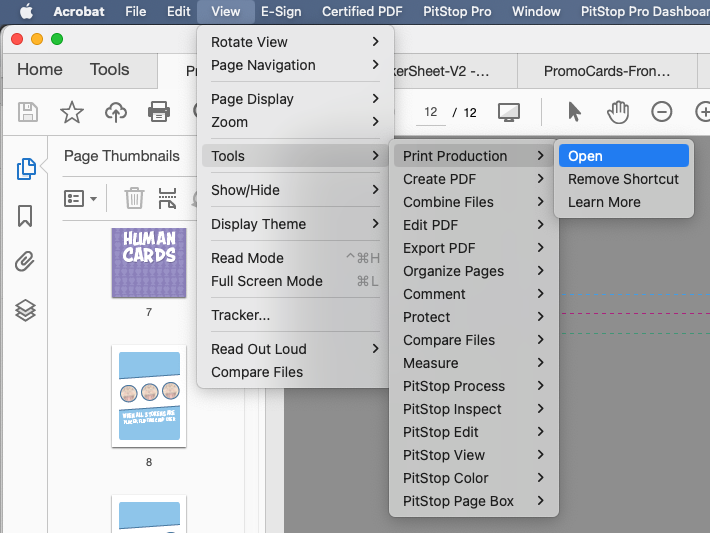
Step 4: Click the Output Preview icon
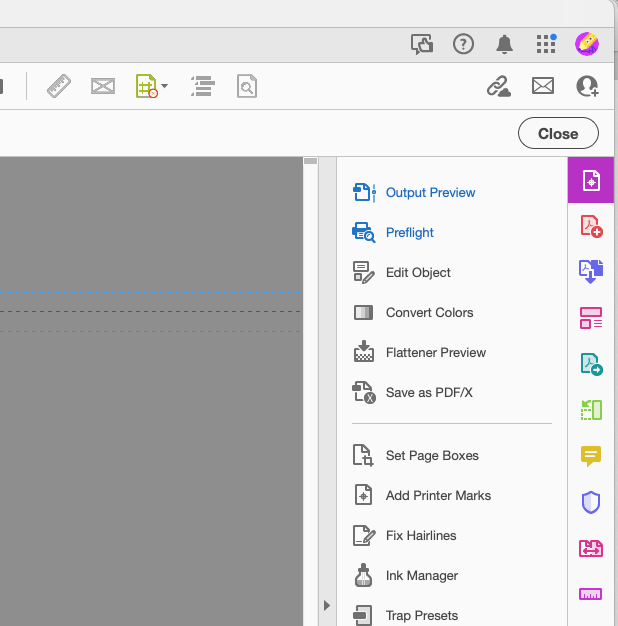
Step 5: Inside the Output Preview Window, activate the Total Area Coverage Tool near the bottom of the window (make sure the % is set to 320)
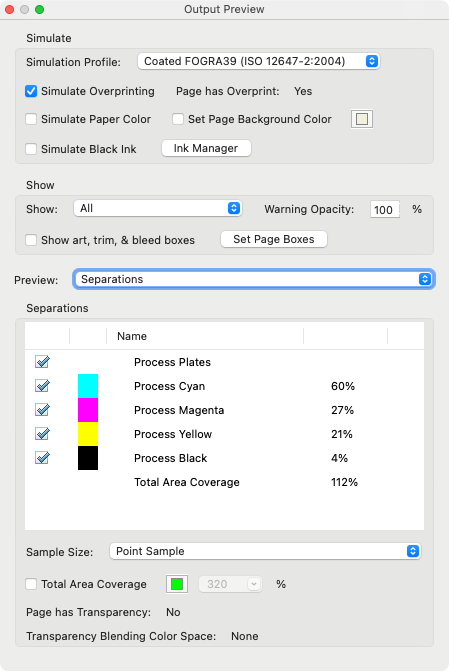
Result: Any areas above 320% will be highlighted in green
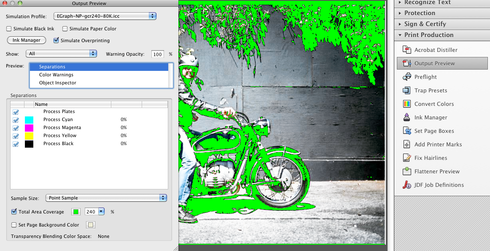
Solutions #
Below are some suggestions to solve issues with high TAC.
Issue: Black text is set between 320% and 400% TAC. #
In the source document (InDesign, Illustrator, etc), select the text and change the color to pure black (CMYK values of C:0% M:0% Y:0% K:100%).
Issue: Artwork has areas above 320% #
In the source document (ex. Photoshop), adjust the dark areas of the image so they are below 320% TAC. (See the example below of an image file that has had high TAC content greater than 320% reduced to below 320%)
